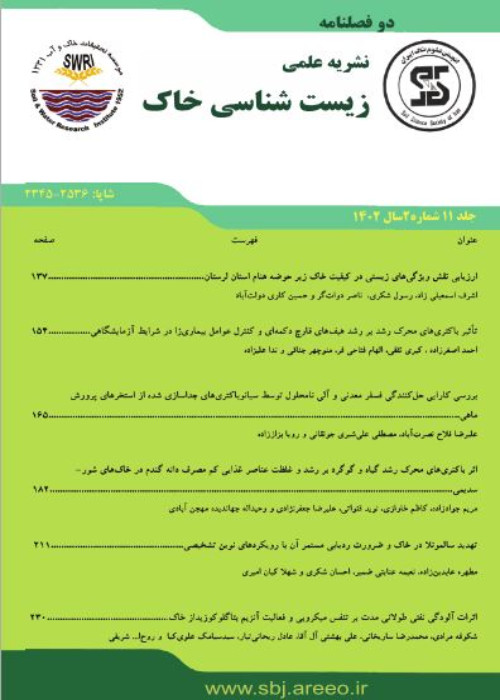Evaluation of different insoluble phosphorus sources to isolate phosphorus-releasing bacteria in fish ponds
One of the main reasons for the low yield of biofertilizers in fish ponds is the use of insoluble mineral phosphorus sources (often tri-calcium phosphate) during the process of isolation and evaluation of phosphorus-releasing microorganisms. A large part of insoluble phosphorus (50 to 90%) in warm water fish ponds is insoluble organic phosphorus. Therefore, it seems phosphorus-releasing microorganisms isolated solely from mineral phosphorus sources can not be effective as biofertilizers in warm water fish ponds. The aim of this study was to isolate phosphorus-releasing bacteria from warm water fish ponds using NBRIP medium containing organic phosphorus source (calcium phytate) and compare their performance with bacteria derived from insoluble mineral phosphorus source (tri-calcium phosphate) in microcosm conditions (Erlenmeyer contains sediment: conditions similar to a fish pond). The phosphorus release ability of isolates (33 organic isolates and 19 inorganic isolates) was evaluated in NBRIP solid and liquid medium. The range of soluble phosphorus in the liquid medium containing calcium phytate varied between 57.40 - 141.93 and 108.16 - 219.49 mg/l in the medium containing tricalcium phosphate. In the final step, evaluation of isolates in sediment microcosm showed that three isolates from organic phosphorus source (3P, 13P, and 2P) were the best phosphorus release isolates (with 11.86, 12.53, and 28.18 mg / l respectively) and had better performance compared to isolates from mineral phosphorus source. Molecular identification showed these isolates belonged to priestia aryabhattai, Bacillus zanthoxyli, and Acinetobacter johnsonii. Due to the pathogenic potential of A. johnsonii for fish and humans, the Bacillaceae family strains can be considered candidates for use in biofertilizers for further evaluation.
- حق عضویت دریافتی صرف حمایت از نشریات عضو و نگهداری، تکمیل و توسعه مگیران میشود.
- پرداخت حق اشتراک و دانلود مقالات اجازه بازنشر آن در سایر رسانههای چاپی و دیجیتال را به کاربر نمیدهد.


